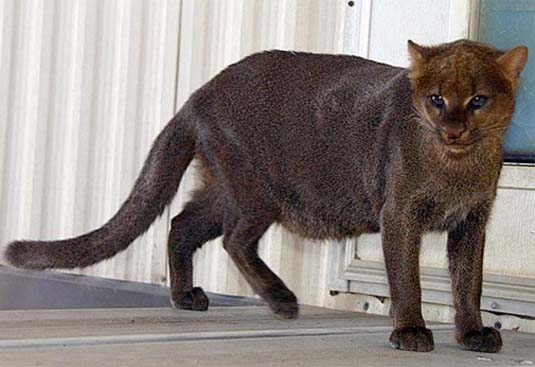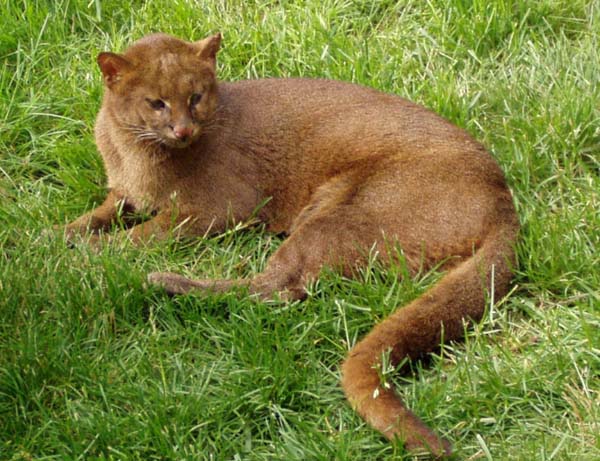Jaguarundi facts
Posted in Wildlife A-Z | February 1, 2011 | Comment NowAlso known as jaguar, Jaguarundi is an American mammal, which is the regarded as the largest feline cat in this continent. We all have heard about the jaguars while exploring the Mayan ruins indicating that this animal was once worshipped as god. Even today, this belief is somewhat indicated by the fact that Jaguarundi is the symbol of strength, power, and splendor. In fact, the name ‘Jaguar’ is derived from a term of Native American language, which stands for ‘the killer that holds the victim in just one jump’ directly revealing much about its power and strength.
Scientifically known as the Panther Onca, this feline animal belongs to the Panthera genus. If you are looking at it for the first time, you will feel as if it is a leopard. However, for a clear cut distinction, look for the rosette shaped prints that are completely different from those seen on a leopard. Are you interested in knowing more about the Jaguarundi? I am sure that you will be as this is the mammal of historic, religious, and cultural importance since times immemorial.
- Physical features: The weight of this animal ranges from 50 to 100 kilograms, while the length ranges from 5.5 to 6 feet with the height from 25 to 30 inches. The skin spots bears a pattern in which the large ones flank the small dots. Mostly, the color of the skin is reddish brown or yellow. But, what is more interesting to know of the Jaguarundi is the fact that melanism can make it look black with black spots and so they are also called black panthers. By contrast, albinism although seen in very rare cases makes the animal look white and so also sometimes are known as the white jaguars.
- Unique Abilities: Jaguars can make many sounds such as grunting, mewing, and roaring. As they love to be in water, they have excellent swimming abilities. While swimming, they can carry their prey with dexterity. And yes, they are more talented in climbing and fishing.
- Habitats: Once to be seen on the Mexico border, it is today only spotted in the Amazon basin. Most of the times, these animals are seen in swamps, rain forests, deciduous forests, and pampas grasslands, especially of northern Mexico as well as the central and northern parts of South America besides the Amazon Basin. They mostly like to be alone and their residing territory is outlined with their waste.
- Life Span: Jaguarundi is a solitary mammal who can live for 12 years when living in the wild. However, in captivity, they tend to live for 20 to 23 years.
- Prey: Rivers are the hubs of their food in form of turtles, caimans (alligator like, but small creatures), and fishes. However, they also eat big ones like tapirs, deer, monkeys, cattle, capybaras, reptiles, and peccaries indicating that the jaguars are carnivores.
- Hunting Skills: The typical hunting manner is to pierce off the skull in just one strong bite – all credit goes to their very strong jaws. Instead of chasing, these strong cat prefer to hide and attack their prey. They tend to hunt at night instead during the day. Although it is rare, they even climb trees for making a trap so that they can easily kill with just a sole powerful bite.
- Protection: Jaguars are hunted very randomly for their fur making them one of the most endangered species in the world today.
- Gestation Period/Reproduction: The gestation period is 90 to 105 days following which the females become mothers of the 2 to 4 young ones. These animals can mate anytime in the year, but separate after the birth. It is only the females who bring up the young ones as the males have a tendency of attacking their own small ones.





 Save to delicious
Save to delicious Stumble it
Stumble it